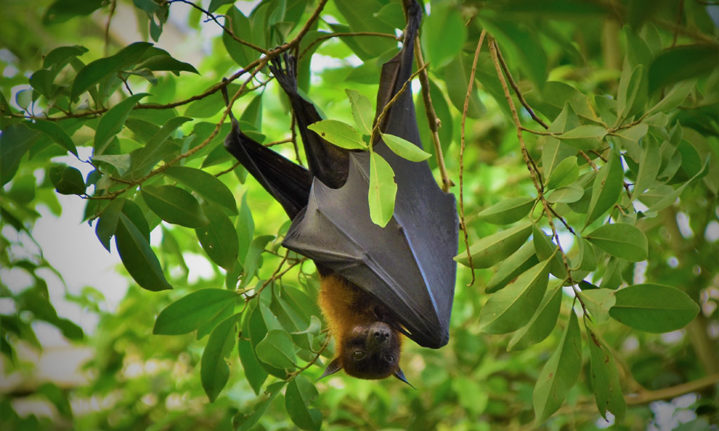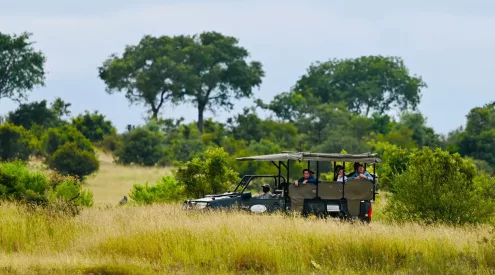It’s International Bat Week, where bats are celebrated for their battiness. Batweek.org is inviting people to ‘tweet up a storm’ using the hashtag #batweek on Wednesday 30 October at 1pm Eastern Time (7pm in South Africa).
Bats are the only mammal that can fly and are found almost everywhere on Earth, except for in extreme environments like the poles, deserts and at high altitude. These sometimes feared or misunderstood creatures have an important ecological role to play.
There are around 1,400 species of bats and they can eat about their body weight in insects each night, which helps farmers protect their crops. Even fruit bats are not a danger to farmer’s orchards, as fruit bats tend to consume only very ripe fruit, while farmers harvest their fruit before it is fully ripe. Bats are also important pollinators.
Here are nine bats from around the world and some interesting facts about them.
1. Spotted bat
View this post on Instagram
The spotted bat certainly must have been an inspiration for the creators of the 1984 movie Gremlins. These medium-sized mammals have especially large ears and are named for their pelt with three striking white spots on its dark fur. They live in semi-arid regions of the western United States
2. Bumblebee bat
The bumblebee bat is the world’s smallest mammal and weighs only 2 grams. It’s roughly the size of a bumblebee and lives in caves in Thailand and Myanmar. It feeds on insects and the female gives birth to a single baby in a season. These little creatures are listed as vulnerable on the IUCN red list.
3. Horseshoe bat
Five species of large horseshoe bats occur in central and eastern Africa with one of the species found in a remote part of the Kruger National Park and another found only in Mozambique.
4. Cape serotine bat
Described as a ‘small brownish bat with a greyish underbelly and semi-scruffy fur,’ the Cape serotine bat – also known as the Cape house bat – is found sub-Saharan Africa, including South Africa and Lesotho. It has been recorded as far north as Guinea Bissau and Eritrea. According to research compiled by the Endangered Wildlife Trust and South African National Biodiversity Institute, the most severe threat to these little bats are wind turbines.
5. Egyptian fruit bat
This species of fruit bat is found throughout Africa (except the Sahara Desert), the Middle East and Pakistan. Believed to be the most vocal bat species, they use echolocation to find food, sending out high pitched squeals and clicks. These bats are about 15cm long but have a wingspan of about 60cm.
6. Free-tailed bat
These robust bats roost in colonies and can consume an enormous amount of moths and insects. They get their name from their tails which extend beyond the tail membranes, unlike most other bats.
7. Northern ghost bat
Northern ghost bats are fairly rare and completely white. This South and Central American bat species is found in humid habitats like riparian and tropical rainforests and roosts under palm fronds. They feed mostly on moths and in Costa Rica they are known to sing when feeding.
8. Hoary bat
According to the University of Michigan’s Biokids website, ‘the body of hoary bats is about the size of a fat mouse’. Its scientific name, Lasiurus cinereus, means ‘frosty or ash-coloured hairy tail’. This bat feeds on insects, ‘approaching the insect from behind, taking the rear portion in its mouth and biting off and swallowing this area of the insect, while dropping the wings and head.’
9. Vampire bat
Vampire bats are the only mammals that can survive entirely on blood. They typically live in colonies of about 100 (although up to 1,000 bats can live together). According to National Geographic, a 100-strong colony can drink the blood of 25 cows in a year.
Bat migration, Zambia
About 10 million straw-coloured fruit bats migrate to a swamp forest inside Zambia’s Kasanka National Park between October and December each year. This is considered one of the world’s great animal migrations.
In celebration of Bat Week, the United States’ Bureau of Land Management ran a Facebook poll earlier this week to vote for the cutest bat in its Bat Beauty Contest.
Featured image: Instagram/ @aaacwildliferemoval_charlotte



















